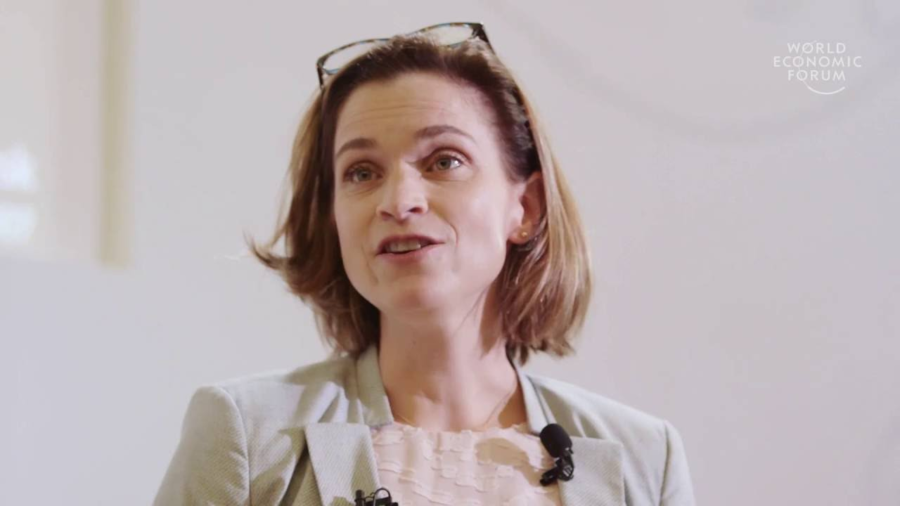Leslea Hlusko: As we come together as part of this amazing gathering of people from around the world, I ask you to pause for a moment to appreciate the role that our biology plays in all of this, from the innovation of the airplanes that brought many of us here, to just breeding the air. We can only do these things because our biology enables us to do them. And that biology is the result of millions and millions of years of evolution.
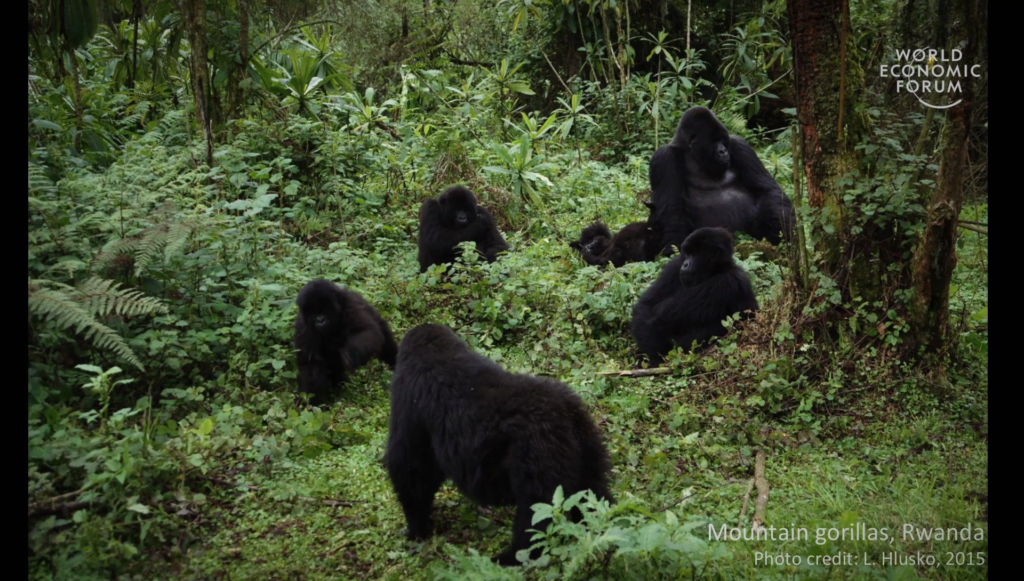
I’m going to take you back to two key evolutionary innovations that happened early on in our lineage that set us off on a trajectory distinct from that of our closest living relatives, the African great apes, chimpanzees, and gorillas. But before we travel back in time, it’s important that you know that the world 15 million years ago was a really different place. There were a lot of apes around, and very very few monkeys.
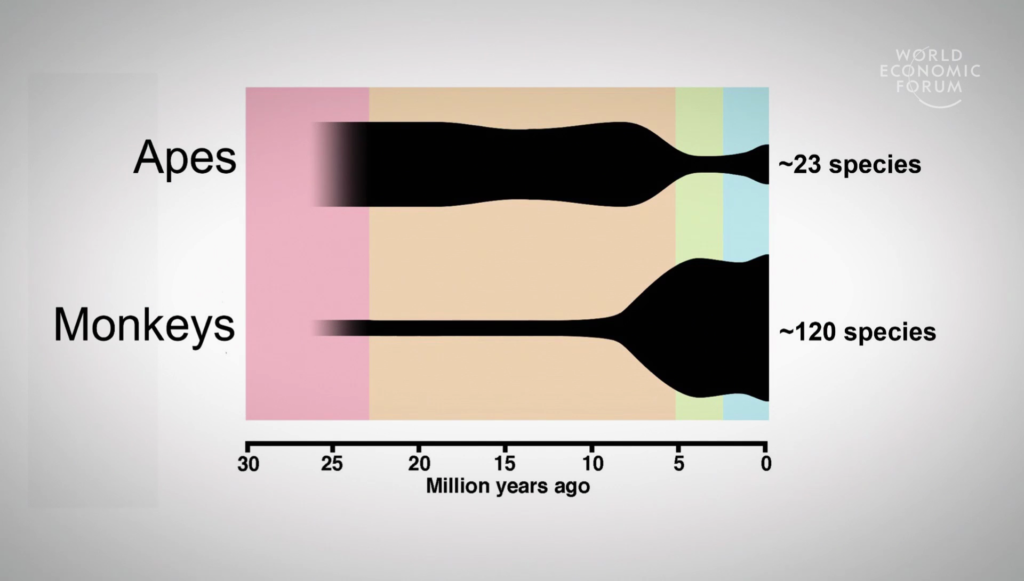
Now, I don’t mean in terms of sheer numbers, because of course there are a lot of people on the planet today. I’m talking about the numbers of species and genera, and their geographic ranges.
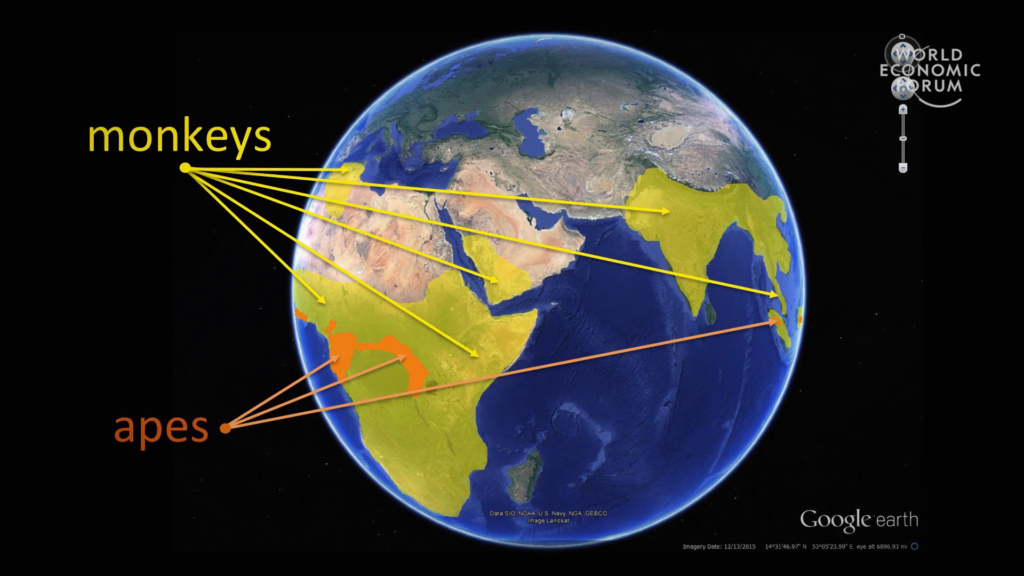
Today when we look at the primates on the planet, we see that there are many species of monkeys around. They’re all over Africa and across Europe and Asia. But when you look at apes, they have a much more restricted geographic range, and as a consequence they find themselves at significant risk of extinction. Climate change is central to this because 10 million years ago, the Mediterranean dried up. And as those monkeys and apes were adapting to that major shift in the climate, they were in stiff competition with each other.
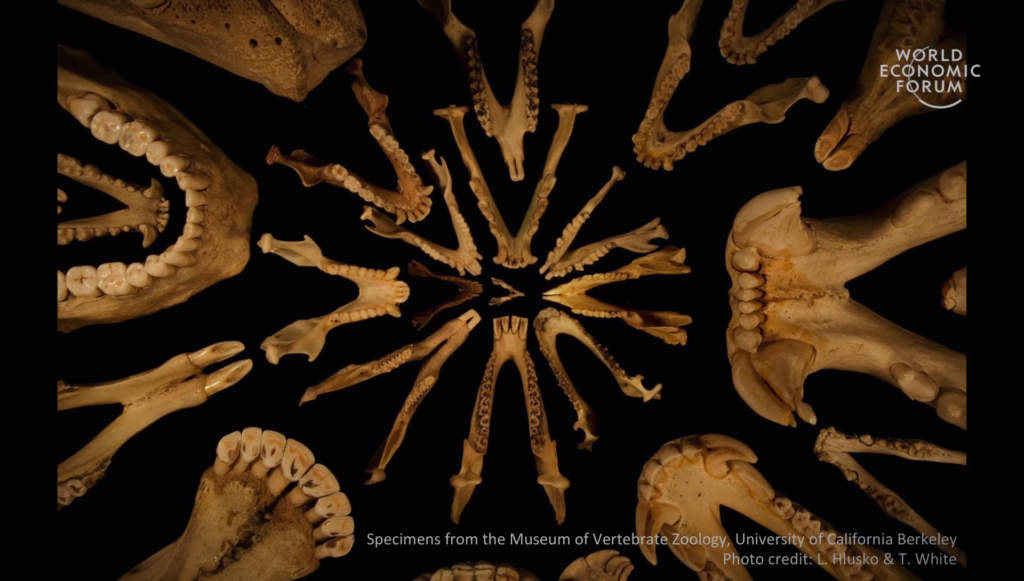
Research in my lab has led to new discoveries as to how the dentition was involved in this. Teeth are an essential tool for studying evolution because they develop and erupt over a significant portion of your life. And also they’re inorganic, so they preserve really well in the fossil record.
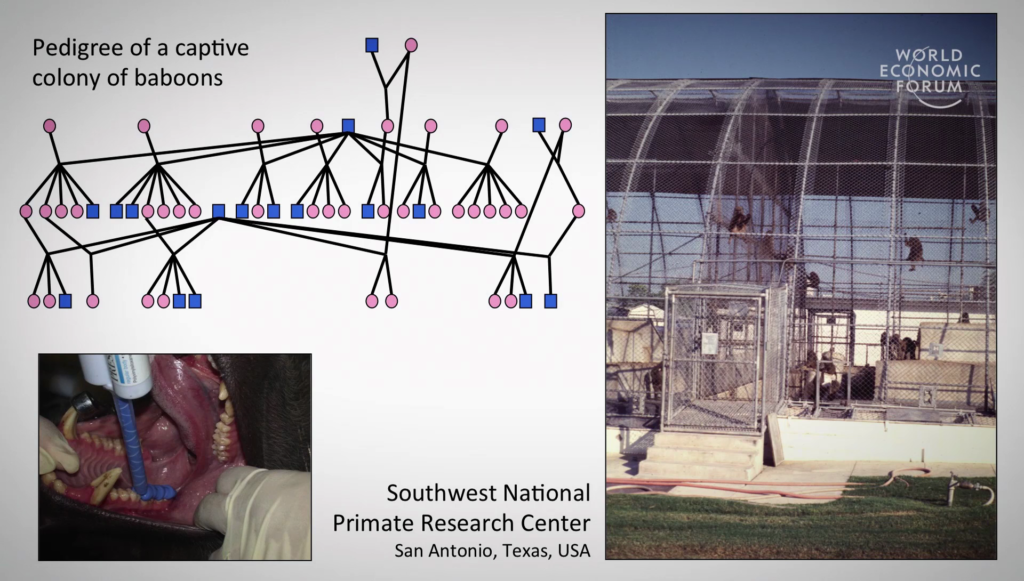
I’ve been working with a pedigreed colony of baboons to study the inheritance of dental traits. These analyses enable us to characterize evolution in a way that reflects how the genetic mechanisms that actually underlie dental formation, how they have evolved through time.
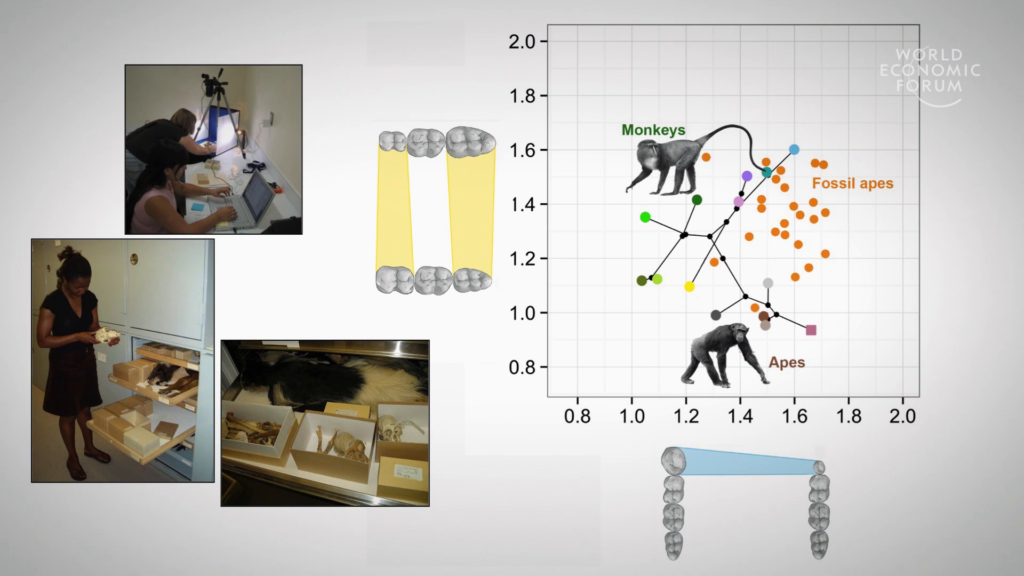
So, we do this by capturing the relative sizes of teeth. These relative sizes capture the output of genetic patterning mechanisms. So if you look on this graph, you can see that the living monkeys occupy—they have a lot of variation compared to the apes. But when we plot on those apes from five to ten million years ago, you see they actually occupied space that is only monkeys today. Those apes were outcompeted by the monkeys.
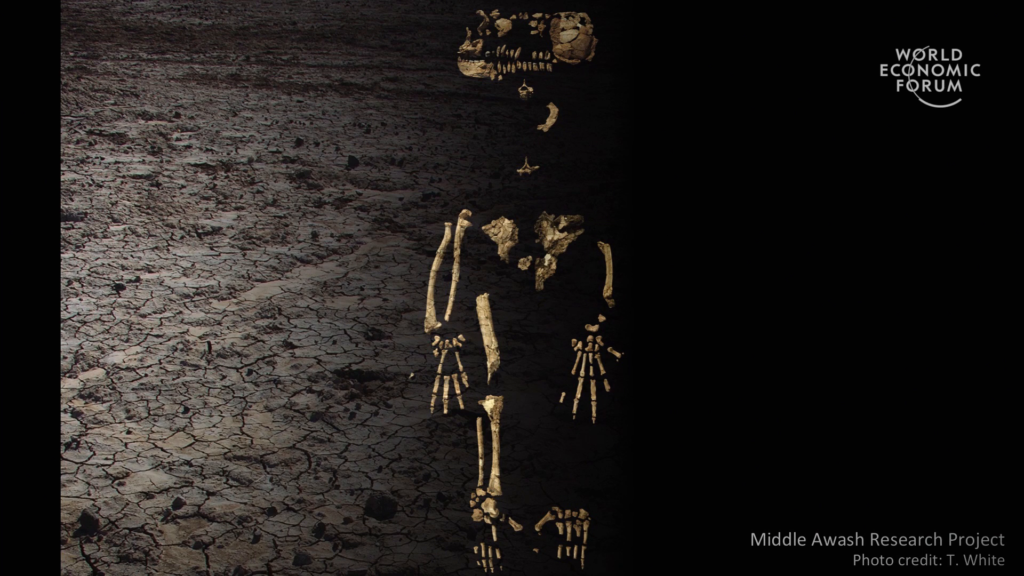
Now I’m going to take you to 4.4 million years ago, to Ethiopia, where we see the fossil evidence for how our lineage survived that competition. At the site in [recording skips @3:13] Aramis, we have found evidence of an ape that had two really unusual characteristics, both evinced in the shape of the bones of the skeleton. The pelvis is bowl-shaped, and there had been selection for musculature that could stabilize the pelvis while standing on one leg. So these apes could walk like we do.
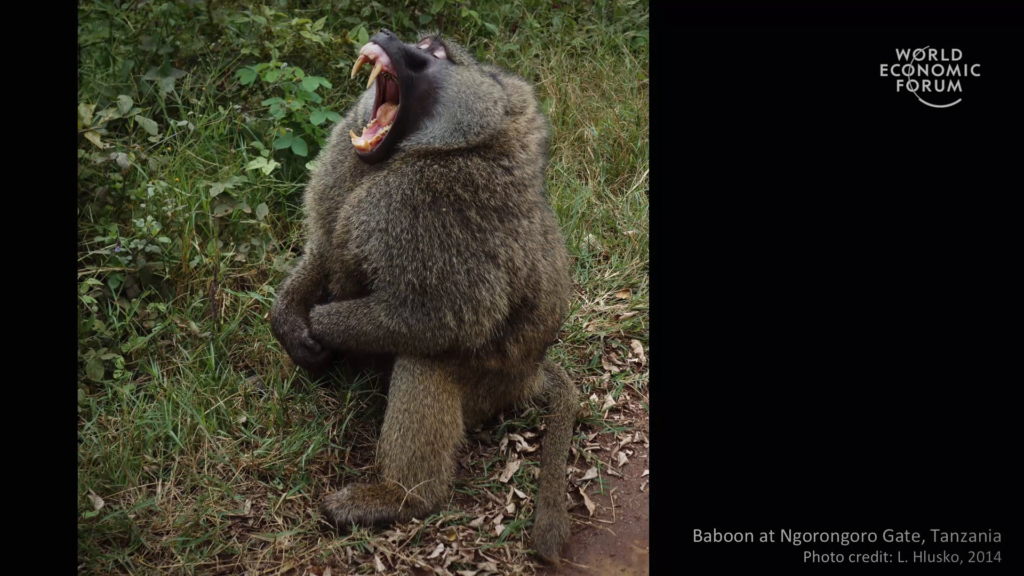
In contrast, chimpanzees? They don’t have that, and they walk like this. [takes a few steps, rocking from side to side each footfall] You see here, this baboon has really large canines? Most male primates have very large canine teeth that they use to fight with each other over social dominance. And also to fight over sexual access to females. Ardipithecus was different.
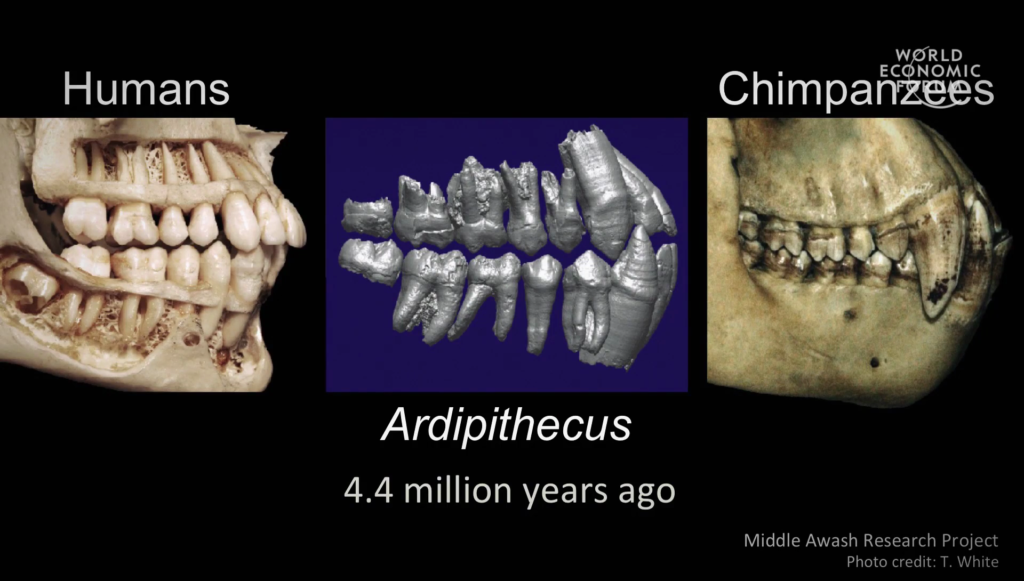
Instead, Ardipithecus males and females both had small canines. So we read from that that these males and females, they were significantly bonded together. They had pair bonding. You don’t see this in any other ape today.
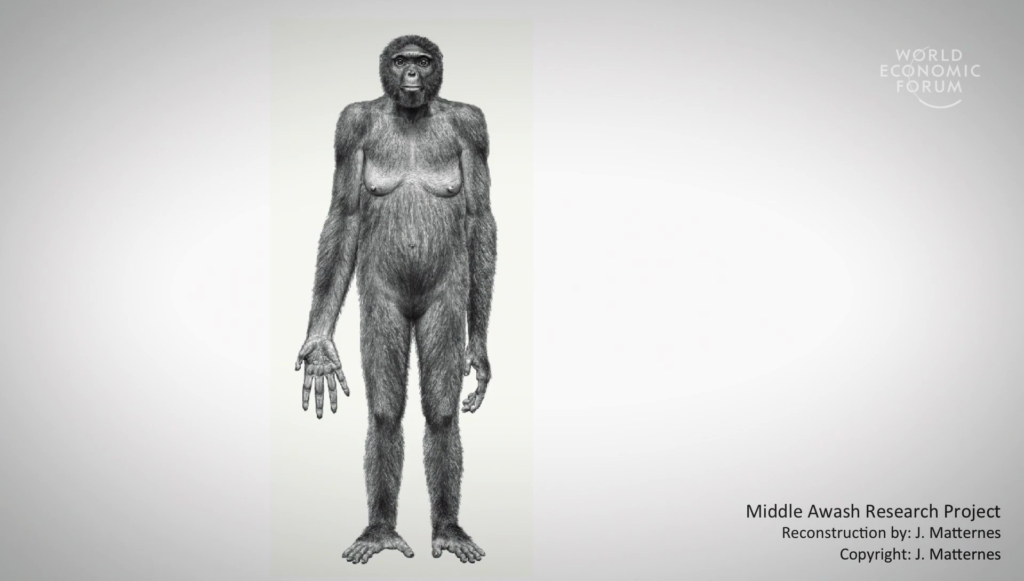
So now, let’s pull all in this together. So we had these two characteristics of the standing on two legs, walking well on two legs, and being pair bonded. How do those two things provide an advantage in the competition with monkeys?
Well, monkeys have shorter generation times. Which means that baby monkeys grow up and become adult monkeys much faster than do apes. And so that extended childhood of apes. It opens up an important opportunity for significant parental investment. And that can lead to more complex learning. It can lead to language. And it can lead to adolescence.
Over time in our lineage, the males that could carry their own offspring, who could carry food and provision, they provided their children with a significant evolutionary advantage.
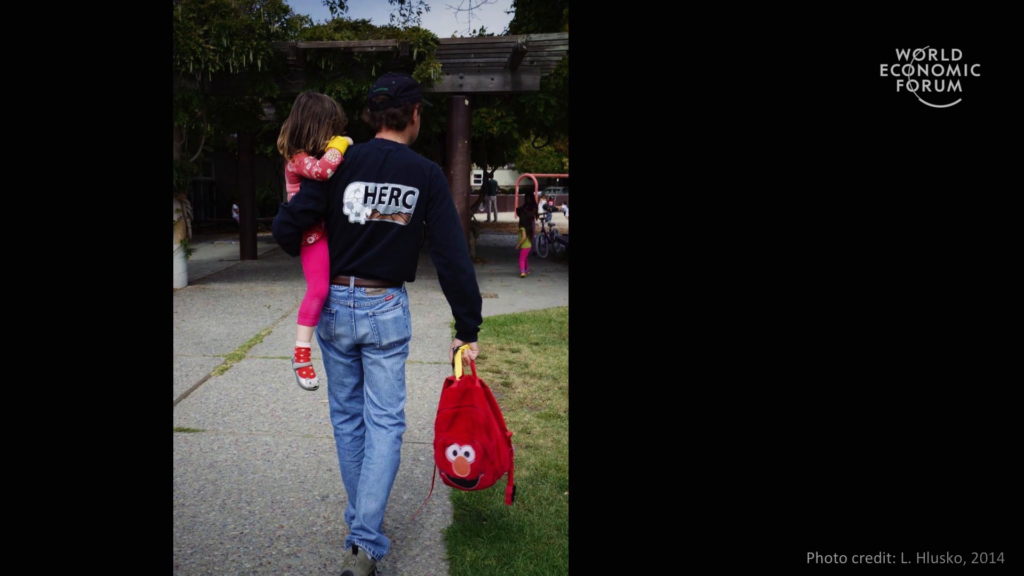
So today, when you see behaviors like this, know that it’s deeply embedded in our evolutionary lineage. This is the key evolutionary adaptation that underlies what it means to be on the human lineage. Thank you.
